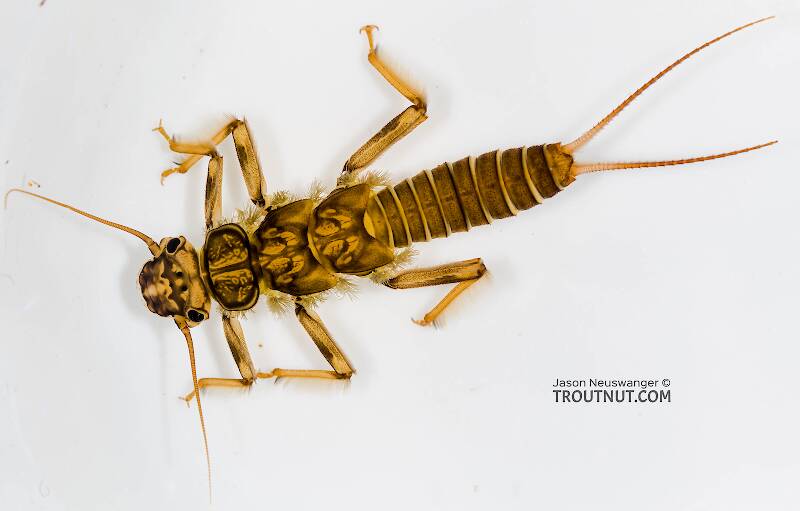
Blue-winged Olives
Baetis
Tiny Baetis mayflies are perhaps the most commonly encountered and imitated by anglers on all American trout streams due to their great abundance, widespread distribution, and trout-friendly emergence habits.

Mayfly Species Paraleptophlebia strigula (Blue Quills)
Where & when
Time of year : June through August
In 25 records from GBIF, adults of this species have mostly been collected during July (44%), August (40%), and June (12%).
Species Range
Physical description
Most physical descriptions on Troutnut are direct or slightly edited quotes from the original scientific sources describing or updating the species, although there may be errors in copying them to this website. Such descriptions aren't always definitive, because species often turn out to be more variable than the original describers observed. In some cases, only a single specimen was described! However, they are useful starting points.
Male Spinner
Wing length: 7 mm
This species has a pale abdomen shaded with brown; it is close to Paraleptophlebia guttata.
Head and thorax deep blackish, the pleura tinged with brown. Legs whitish. Fore femora tinged with brown throughout; middle and hind femora brown-tinged apically, with the knee brown. Wings hyaline, veins pale. Thorax deep red-brown. Legs pale amber. Longitudinal veins faintly amber-colored.
Abdomen of male whitish hyaline on segments 2-6 and the anterior portion of 7; tergite 2 with considerable dark shading. Apical segments opaque, deep chocolate brown. A short black transverse streak on the postero-lateral corner of segments 2-6, which often has some slight brown suffusion anterior to it, distinguishes this species from P. guttata; in the latter, black lateral dots are present instead of the black streaks. Tails and forceps whitish, faintly brown-tinged at the base. Penes very similar to guttata, but convergent, not divergent apically; the beak-like lateral projections are somewhat shorter and the ribbon-like reflexed spurs longer. (See fig. 133)The subanal plate with a deep narrow U-shaped apical excavation.
Female Spinner
Start a Discussion of Paraleptophlebia strigula
References
- Arbona, Fred Jr. 1989. Mayflies, the Angler, and the Trout. Nick Lyons Books.
- Knopp, Malcolm and Robert Cormier. 1997. Mayflies: An Angler's Study of Trout Water Ephemeroptera . The Lyons Press.
- Leonard, Justin W. and Fannie A. Leonard. 1962. Mayflies of Michigan Trout Streams. Cranbrook Institute of Science.
- Needham, James G., Jay R. Traver, and Yin-Chi Hsu. 1935. The Biology of Mayflies. Comstock Publishing Company, Inc.
Mayfly Species Paraleptophlebia strigula (Blue Quills)
Species Range
Common Name
Resources
- NatureServe
- Integrated Taxonomic Information System
- Global Biodiversity Information Facility
- Described by McDunnough (1932)


